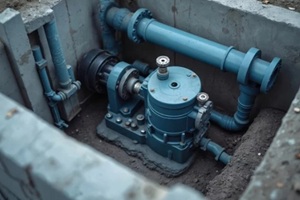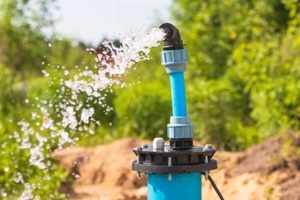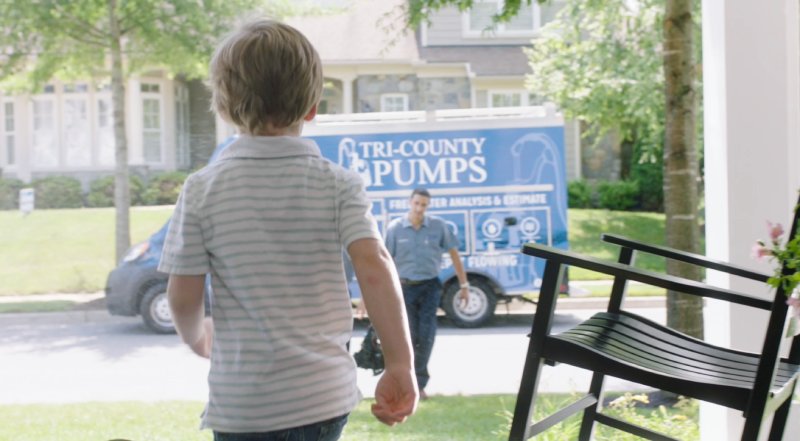
When your water comes from a well, keeping the well pump in good working condition at all times is essential. In the event your pump fails, one of the first questions to consider is whether insurance will help pay for repairs or even a potential replacement.
The answer depends on the situation, and many property owners are surprised to learn where their coverage starts and where it stops. Here’s a breakdown of what homeowners’ insurance typically covers when a well pump fails, and some of what they do not cover.
When Your Policy Covers a Well Pump
Homeowners’ insurance can help cover well pump damage, but it depends on what caused the issue.
Most HO-3 and HO-5 homeowners policies cover damage that happens suddenly and without warning if it’s caused by a listed peril. These include fire or lightning, wind, hail, ice, and falling objects.
If a lightning strike causes a surge that fries the pump’s motor, or a windstorm knocks a tree onto your above-ground unit, those are typically covered scenarios.
Vandalism and theft are usually included as well. If someone steals wiring or damages your system intentionally, these are considered covered perils. As long as the event falls under the policy’s definitions and was unexpected, the claim will likely be paid at replacement cost minus your deductible.
One factor that influences how your well pump is handled involves where it’s located. If the pump is physically attached to the home, it typically falls under Dwelling Coverage (Coverage A), which provides the full dwelling limit. If it sits apart from the house, such as in a field or shed, it falls under Other Structures (Coverage B).
Coverage generally caps at 10% of your dwelling limit, which can catch many homeowners off guard. For example, with a $300,000 dwelling limit, you’d have just $30,000 for detached structures unless you pay to raise that cap.
What Standard Policies Don’t Pay For
While external forces like storms and theft are covered by standard homeowners insurance, internal failures are not covered. Mechanical or electrical breakdowns are typically excluded because they result from internal wear or faulty operation rather than an outside force.
If a pump motor fails due to age or sediment buildup, the failure is treated as a maintenance issue. The same goes for problems caused by a low water table or a dry well; these are considered natural conditions, not perils.
Other common exclusions include earth movement and flooding. If a sinkhole takes out your well or heavy rains flood the system, you’ll need separate insurance. Earthquake and flood policies are available, but they must be purchased separately from the base policy.
Filling in the Gaps in Coverage

Several options are available for closing these gaps and getting broader protection for your well system. One option is to add Equipment Breakdown Coverage to your homeowners policy, which covers mechanical or electrical failures caused by power surges, burnout, or improper installation. Another important add-on is Service Line Coverage, which applies to underground pipes and wiring that connect your home to external systems, including your well pump.
Home warranties or service contracts are a popular choice for those looking to offset repair costs on aging systems. These plans usually handle wear-and-tear failures, although coverage varies by provider, and you can plan on spending $300 to $600 annually for a service contract.
Why the Costs Matter
Thorough knowledge of your coverage options matters more when you realize how expensive a well pump repair or replacement can be.
Market data puts the average replacement cost at around $1,889. However, costs can range from just under $1,000 to well over $2,800, depending on the pump type and depth. High-end systems, like constant-pressure or deep-well pumps, carry significantly higher price tags. A windmill-driven pump, for instance, can run up to $21,000.
If your well is more than 150 feet deep, expect steeper prices due to additional labor and equipment needs. Compared to these figures, a $25 annual endorsement becomes a smart safeguard.
What You Can Do Today
A yearly checkup is a smart way to keep your well pump running longer. Licensed well contractors should check the flow rate, inspect electrical components, and flush sediment buildup each year. Pumps typically last between 8 to 15 years with regular servicing.
Documenting the condition of your pump is also important. In the event of a claim, photos of your pump before the incident, maintenance records, and water quality logs can help show that the damage was sudden, not gradual.
Prompt claim filing matters, so make sure to contact your insurer right away, secure the site, and keep any receipts for emergency services or temporary equipment rentals.
Know What Your Policy Covers Before Trouble Hits

Understanding how your homeowners’ insurance applies to well pump systems helps prevent surprise costs and confusion when something goes wrong. What your policy covers can vary based on how the pump is set up and what caused the damage.
At Tri-County Pump Service, Inc., we’ve spent over 30 years helping homeowners across Maryland, Virginia, and West Virginia protect and maintain their water systems. If you’re unsure about the condition of your pump or need expert service for any part of your home’s water cycle, we’re here to help and educate.
Schedule a visit with one of our trusted technicians, give us a call at 1-(301)-432-0330, or reach out through our online contact form to get started.



